Okinawa Weather Station
An explanatory board that reads “Site of Okinawa Local Meteorological Observatory" along the road in front of the site of the Camp Naha, Ground Self-Defense Force in Naha City stands. It is indicated by the arrow on the map.
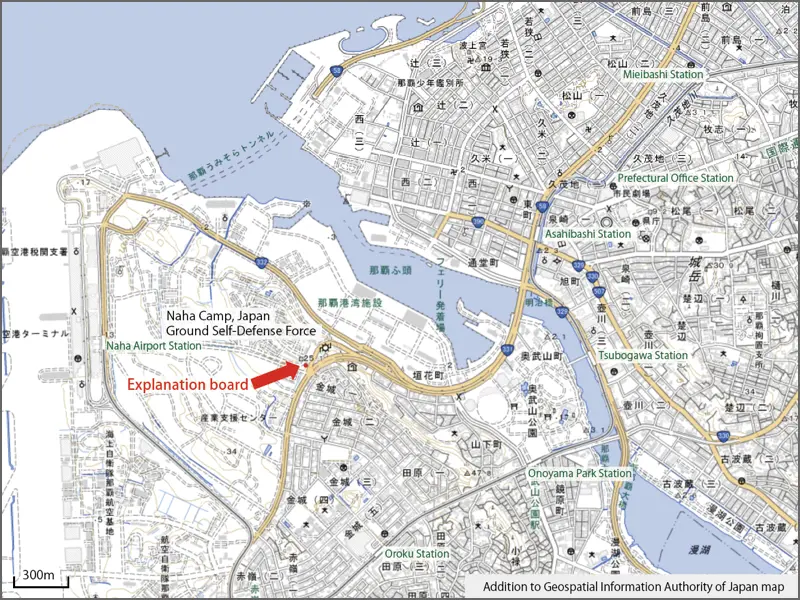
The board states that here is the site of the observatory built in 1927. Although the name “Okinawa Local Meteorological Observatory” is written on the board, it was called the “Okinawa Weather Station" when it was built.
And the actual building was not located where the board says, but on the grounds of the Camp Naha.
In this article, I would like to write about the Okinawa Weather Station.
(1) Weather Observations in Naha (Meiji and Taisho Periods)
Weather observation in Naha began in 1890 with the establishment of the Naha Second Class Weather Station in Matsuoyama, Naha Wakasa-machi (present-day Matsuyama, Naha City).
In 1900, it became the Naha 1st class weather station, and conducted regular observations on 24 times every day.
The weather station was financed by the national government, but from 1909, when the prefectural system was enacted in Okinawa, it was financed by the prefecture.
The name was changed to the Prefectural Naha Weather Station in 1917.
In May 1924, the Naha Weather Station was destroyed by fire, and all of the instruments, weather registers, and other items in the building were also destroyed by the fire.
The area around the weather station was home to a school, a courthouse, and the governor’s office, but the surrounding area was not damaged fortunately.
(2) New Construction of Okinawa Weather Station
After the fire, observations resumed in June with a temporary turret on the roof of a building in the corner of the prefectural assembly building until a new station could be constructed.
At the same time, construction of the new station was underway, and it was decided that the construction site would be on high ground in Oroku Village, Shimajiri County. (now Naha City)
In April 1927, the new building was completed as the Okinawa Weather Station attached to the Central Weather Bureau.
A photograph of the building is shown below.
This photo was taken from “A Centennial History of Meteorology, Main Volume” (Japan Meteorological Agency / 1975). The caption of the photo reads, “Okinawa Weather Station in the early Showa Period.
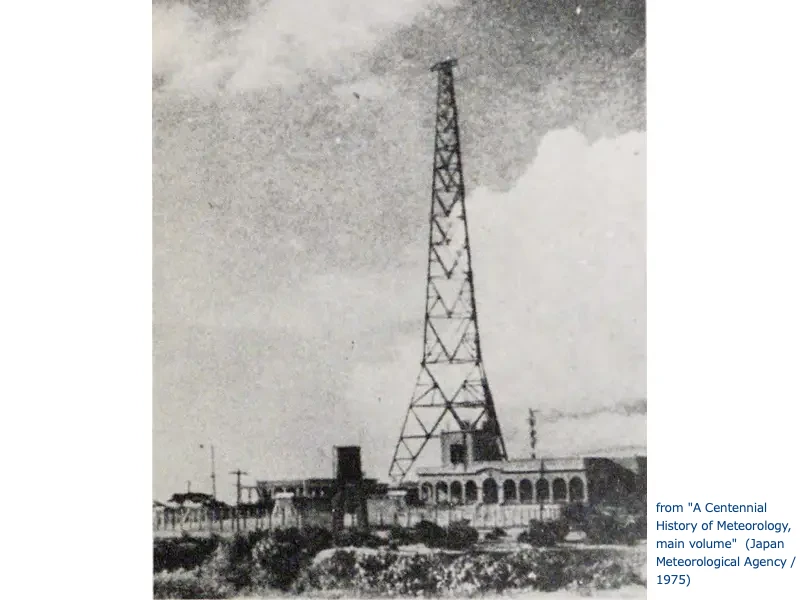
Director Yamauchi, who was appointed as Director of the Naha Weather Station in the same year, reported to the Central Weather Bureau on the status of the new building, from which I quote a portion.
" (omitted).. The following is a brief description of the completed buildings. The main building (320m2) is a one-story reinforced concrete building consisting of 9 rooms, all of which have 1.8m wide verandas on the south side, similar to those found on buildings in tropical areas. Entering from the central entrance, there is a reception room on the right and an observation room on the left. Across the corridor are the survey room, rain gauge room, clock room, instrument and laboratory rooms, library, accounting room, and duty room. The wind gauge on the roof is approximately 12 meters above the ground.
As the location is inconvenient for water supply, there is a separate reinforced concrete water tank to collect rainwater from the rooftop, which is installed so that water can be freely used wherever it is needed in the building. In the left of the main building, two large 90-meter-high steel towers, the only one of its kind in Naha City, stand 150 m apart from north to south. Between the towers, there is a 188 m2 building that houses a radio transmitter room, an office, an accommodation room, a small messenger room, a bathroom, and others. Connected to this are a power room (33m2) and a storage battery room (46m2) in a separate building, which are connected to each other by a corridor. …(omitted)."
(Enlarged part of the photo above)
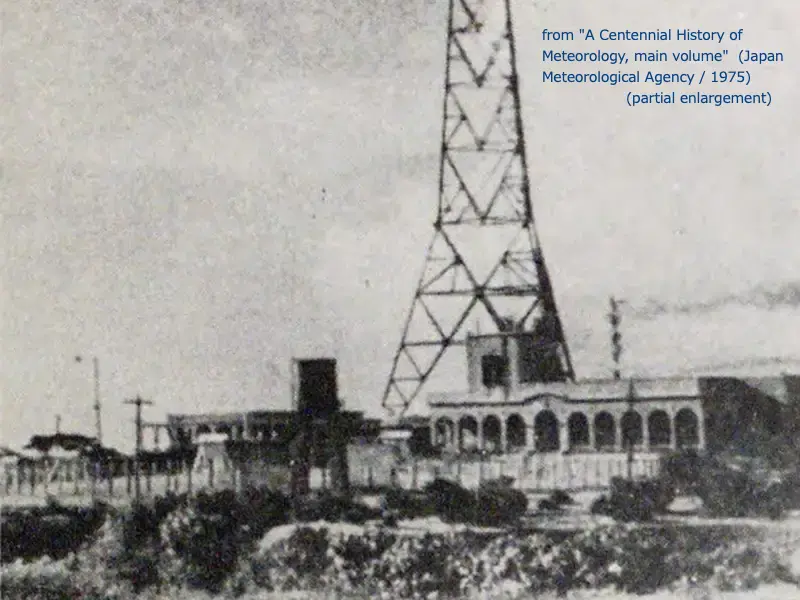
In 1932, the organization of the Central Weather Bureau was partially revised, and the Okinawa Weather Station was renamed the “Central Weather Bureau, Okinawa Branch.
Then in 1939, the name was changed to the “Okinawa Local Meteorological Observatory, because of all weather stations nationwide became state-run.
(3) Meteorological observatory during the Battle of Okinawa
In 1941, the Ministry of the Navy designated weather stations of particular military importance. In the Nansei Islands, five were designated: Ishigakijima, Naha, Okidaitojima, Minamidaitojima, and Naze.
In December 1941, when the Pacific War began, weather press control was implemented and weather stations came under military control. Weather forecasts disappeared from newspapers and radio. (Some information on special storm warnings was reported in some cases.)
The weather station personnel were tasked with sending observation information to the military.
On October 10, 1944, the U.S. military conducted an air raid on the main island of Okinawa. Naha City, Oroku, Kadena, and Yomitan airfields were bombed.
Fortunately, the meteorological observatory was not bombed, but many of its employees lived in Naha City, and their houses were burned. The staff gathered at the observatory set up a radio communication room in an air-raid shelter in Oroku and used it as a temporary facility for weather observation.
In April 1945, the U.S. forces landed and the ground war broke out.
The Oroku bunker collapsed during a bombing in May, destroying equipment and wounding staff members. The staff began to move toward the south.
In June, the military said to the staff that the military was going to charge, but since the weather staff were not military personnel, they should take free action, and the staff was released from group activities.
They were then evacuated to the Mabuni area, but many of them died. Of the 30 or so staff members, only five survived.
(4) Erection of the Ryufu-no-hi Monument
In 1946, after the war ended, the Director of the Naze Weather Station visited Okinawa aboard a U.S. military ship to investigate the whereabouts of the meteorological staff of Okinawa. He met with the surviving employee, visited Ihara, Mabuni Village (Sanwa Village in 1946, now Itoman City), the last place of the meteorological observatory employees, and decided to erect a memorial monument.
In 1951, the director of the Ryukyu Meteorological Observatory visited the Tokyo Central Weather Bureau to give a briefing on the conditions of the observatory staff during the Battle of Okinawa, and also requested that a cenotaph be erected.
In December 1955, the monument was completed with donations from meteorological officials from all over Japan and Ryukyu. The names of 70 persons killed in war are inscribed on the monument, and the monument is named “Ryufu-no-hi Monument” in honor of the Ryufu-kai, a mutual aid association of former Okinawa Meteorological Observatory employees.
(5) Former Weather Station after the war
The area where the former Okinawa Weather Station was occupied by the U.S. military after the war, and the building was repaired and used as the U.S. Consulate General. The explanatory at the site says that the facility was completely destroyed in 1945. But some buildings remained.
A photo of a garden party being held in front of the building is in the collection of the Okinawa Prefectural Archives.
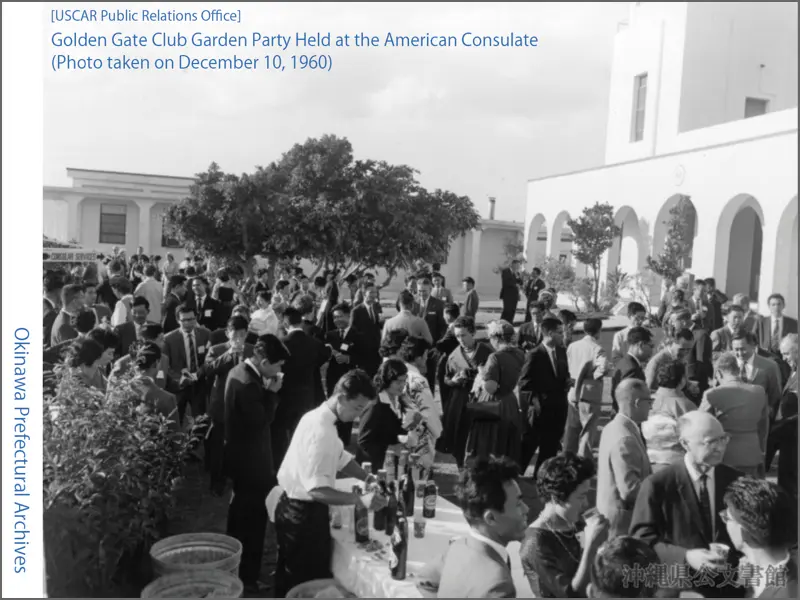
After Okinawa’s reversion to Japan in 1972, the former U.S. military base was transferred to the Self-Defense Forces Garrison.
The buildings remained for some time after that, but I couldn’t research how it was used.
An aerial photograph from 1977 shows the building.
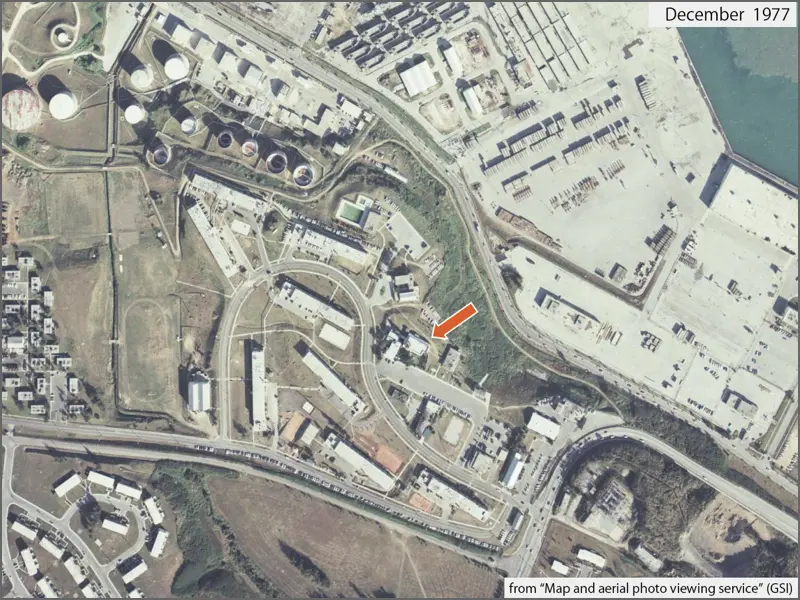
However, it was demolished in 1987.
NHK Archives has a record of “Naha City: Ruins of the Weather Station that Supported Suicide Attacks” (broadcast in September 2009). Looking at the image, it appears that a monument “Ruins of Okinawa Local Weather Station” remains on the site of the demolition.
On the surface is engraved “Completed on April 5, 1927, Demolished on July 31, 1987,” but the corner of the monument is chipped and cracked. The monument is only about 15 cm high, so it must have been hit by a vehicle or other object, or ridden over. At the time of the broadcast, there was a rope around the monument, but I wonder what has happened to it now.
I can’t help but imagine that no one cares anymore.
Well, since the general public is not allowed to visit the monument, all they can do is look at the explanation board along the road.
[Reference] (all written in Japanese)
“History of the Meteorology of Ryukyu (2)” (The Weather Journal, Vol. 40, No. 1, Gushi Yukitaka, 1973)
“A Centennial History of Meteorology, book of materials" (Japan Meteorological Agency / 1975)
“Naha City: Ruins of the Weather Station that Supported Suicide Attacks” (NHK Archives / September 2, 2009 broadcast)
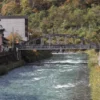
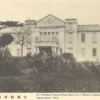
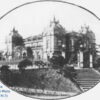

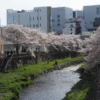

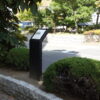
Discussion
New Comments
No comments yet. Be the first one!